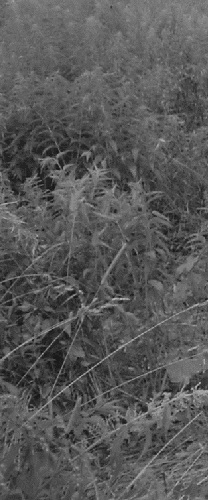About the subject. Genetic studies.
Genosystematics
The second half of the 20 century was a period of the start of biochemical method application in different branches of science. First attempts to apply those for the study of the population genetics of the Cladocera (Hebert, 1972, 1974a-c) were promising. At the same time, the genetists are usually hype-estimating their abilities to make some taxonomic conclusions and, together with some positive contribution, made a lot of lapses, i.e. due to ignorance of obvious achievements of morphological systematics and methods, or of rules of taxonomic studies and nomenclature. Results of the getetists studying the same question were frequently quite different and controversially, like in case of the inventory of species composition of Daphnia in Australia (Benzie, 1986b, 1988a; Hebert, Wilson, 1994, 2000). 70-80th of the 20th century was the time of a deep and quite understandable disappointment of traditional taxonomist in the genetic methods.
But since the 90th of the 20th century, a big "work on the bugs" was made in the methods of the obtaining genetic data and their analysis. A new page in the genetic studies was opened due to introduction of molecular methods, i.e. sequencing of the mitochondrial (16S, COI, ND1, ND2, ND5) and nuclear (5,8S, 18S, 28S, ITS-1, ITS-2) genes (Colbourne et al. 1997, 1998; Taylor et al., 2002; Sacherová, Hebert, 2003; Ishida et al., 2006). Also a change of the position of the genetists to the traditional taxonomy takes place recently. At the same time, the traditional taxonomy now has a good independent method of the analysis of a taxon grouping. A very important achievement of recent genetics of the Cladocera is a sequencing of full genomes of D. pulex и D. magna (Colbourne et al., 2011; Ebert, 2011). Together with a wide field of bioinformatic studies, the full-genomic studies gave us an instrument for primer selection for any genes.
In the 90th of the 20th century, a method for dating of deviations of different branches of the organisms was proposed ("molecular clocks") (Lynch, Jarrell, 1993). Concerning Cladocera, it was applied exclusively to the genus Daphnia (Lehman et al., 1995; Taylor et al., 1996; Schwenk et al., 2000), plus the family Chydoridae was analysed (Sacherová, Hebert, 2003). "Molecular clocks" demonstrated the antiquity of the Cladocera (earlier Mesozoic differentiation of the genus Daphnia and mid Palaeozoic differentiation of the family Chydoridae and its subfamilies). But other study (Haag et al., 2009) led to a conclusion that the subgenera of Daphnia were separated only few million years ago. Such contradictions could be resolved only based on some fossils, and a study of Mesozoic cladocerans (Kotov, 2007, 2009) led to finding of the ephippia of both subgenera at the Jurassic/Cretaceous boundary. In general, remains of the cladocera are usual in the Mesozoic layers. But earlier Cenozoic fossils are studied inadequately (Richter, Baszio, 2001; Peñalver, 2002), but just they are important for dating of the time of genus deviation.
Barcoding
Hebert et al. (2003) proposed for the determination of any organisms a "universal barcoding" approach (DNA barcoding). For such study, a short fragment of the mitochondrial DNA, encoding cytochrome oxidase sub-unite I (COI) is used. Sequence of the nucleotides in such fragment is species-specific and, according to the authors of such approach, could be used as a DNA barcode of a txon, similarly with the barcodes of different goods in a shop. Such method has series of obvious advantages:
- (1) it is relatively cheap,
- (2) do not require a complicated pre-treating of the samples,
- (3) do not require a strong training of the investigator in the morphological determination of species (and the majority of biologists does not deal with morphology and has strong problems in the determination of taxa),
- (4) even do not require an extensive training in the molecular methods (which are not main task, for example, for numerous ecologists),
- (5) allows to attribute a specimen to a species with a high probability by means of its comparison with an etalon in a genetic database (i.e. Genebank).
"Barcoding" already demonstrated that some "taxa" of the cladocerans are in reality groups of close species, and that different taxa are masking under the same species name in different continents, and these species groups require a more accurate revision, i.e. describing new species (Elías-Gutiérrez et al., 2008; Jeffery et al., 2011; Sharma & Kotov, 2012).
It is necessary to note that the barcoding is only a possible additional method, results of which have a taxonomic application, barcoding is never taxonomy itself. Before the recommendation of the barcoding as a universal method for species identification, a great jointed work of the genetists and morphologists must be done, i.e. for accurate determination of genetic samples, describing of revealed new species etc. Unfortunately, determinations of many specimens with sequences represented in the genetical databases (like BOLD or GeneBank) are inaccurate and even totally wrong, which makes the species delimitation based on such genetic data more complicated instead of making more clear the taxonomy of such groups. We completely exclude a chance to construct an independent "barcoding" taxonomy instead of the traditional taxonomy.
Phylogeography
Avise (2000), one of main ideologists of the phylogeography, determined it as a direction of science, studying the principles and processes, determining a geographical distribution of genealogical lineages (mainly on species level and level of species groups (cited from: Kholodova, 2009). If the peculiarities of the formation of land animal faunas (Reviews: Hewitt, 2001, 2004; Kholodova, 2009) and fishes (review: Makhrov, Bolotov, 2006; Costedoat et al., 2009) are relatively well known, knowledge on the phylogeography of most freshwater planktonic animals are fragmentary, and number of papers on the subject is not so high.
First articles on the Cladoceran phylogeography were published by P.D.N. Hebert and his colleagues (Cerny, Hebert, 1999; Weider et al., 1999a-b). Characteristic features of these and subsequent publications on the cladocera are:
- (1) they are dealing almost exclusively with the genus Daphnia;
- (2) they are almost exclusively deal with North America and Western Europe with especial attention to the northern portions of these continents;
- (3) Almost every time they are concentrated on the consequences of the last glaciation with a classical set of targets: revealing of some refugia, tracing of migration routes etc. Such papers are relatively numerous (Cox, Hebert, 2001; Hebert et al., 2003; De Gelas, De Meester, 2005; Thielsh et al., 2009).
Few phylogeographic papers were specially concentrated on Arcic (Weider, Hobaek, 2000, 2003; Weider et al., 1999). Other regions are studied inadequately, although few successful publications on the daphniids of South America are known, they were concentrated on the regions with a non-tropical climate, because any species of Daphnia are rare in the tropics (Adamowicz et al., 2002, 2004; Mergeay et al., 2008). Concerning the Palaearctic, the phylogeography of the Cladocera was studying by our foreign colleagues based on the samples from our team (Ishida, Taylor, 2007a-b; Xu et al., 2011; Millette et al., 2011).
A most representative phylogeographic study is referred to the genus Polyphemus (Xu et al., 2009). It appeared as a result of a working visit ot A. A. Kotov to the Lab. of M. Crustescu (Windsor, Canada). But at that time the samples from Eastern Siberia were absent, and this region was not represented in contrast to Far East, where some specific phyloclades were revealed. Most interesting results were obtained for European Russia, concerning the history of a post-glacial colonization of this region by Polyphemus. Some phylogeographic conclusions were also made by the members of out team together with the colleagues from the Lab of D. Taylor (Buffalo, USA) (Ishida et al., 2006; Kotov et al., 2006, 2009; Kotov, Taylor, 2010; Bekker et al., 2012).
Recently a series of global works on the genus Daphnia is made. First of all, we need to mark the publication of Adamowicz et al. (2009), revealed allopatric and sympatric patterns in the daphiid speciation and demonstrated some cases of trans-continental passages. This publication is specally important for our project because it demonstrates clearly that the phylogeographs of the cladocerans still have a lot of work to do. Crease et al. (2012) study a phylogeography of the D. pulex species group. They confirmed earlier proposed ideas on the existence of many taxa within this group. Also they concluded that one of these taxa («pan-Arctic» D. pulex) has a cosmopolitan distribution due to its relatively recent expansion from the Holarctic to southern hemisphere. A very important advance in the cladoceran genetic studies is the full genome sequencing of D. pulex and D. magna (Colbourne et al., 2011; Ebert, 2011), allowing to use such data for needs of phylogeography.
Note that we have a chance to trace some events in a pre-Holocene history of some taxa, i.e. Xu et al. (2011) concluded that populations of Leptodora kindtii in North China penetrate this region through Dzungarian Gate in mid Pleistocene.
At the same time, a phylogeography of the Cladocera in Asian Palaearctic, and even European Russia (but these two regions form 3/4 of the Palaearctic zone) could be regarded as very initial one.



